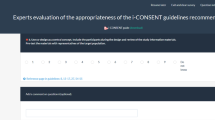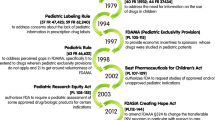Abstract
BACKGROUND
Informed consent is required in most clinical research with humans. While federal regulations state consent information should be understandable to participants, concerns have been raised that consent forms are overly long and complex.
DESIGN
Consent forms from 2006 HIV network trials sponsored by the National Institutes of Health (NIH), Division of AIDS (DAIDS), were analyzed for complexity and length. Comparisons were made between US and international sites, template and site forms, adult and pediatric trials, and trial type. How randomization and placebos were explained was examined as these are frequently misunderstood.
RESULTS
One hundred twenty-four consent forms (21 template and 103 site forms) were reviewed. Median readability was 9.2 grade level, although confidentiality sections were 12.35 median grade level. International sites’ forms had lower readability than US forms (p = 0.025), template forms had lower readability than site forms (p = 0.046), and adult forms were less complex than pediatric (parent) forms (p < 0.0001). Median length of all forms was 22.4 pages; the 85 forms from adult studies had a median length of 27.4 pages. Sections describing randomization were a median length of 53 words.
CONCLUSIONS
Consent forms are extremely long, exceeding recommendations for how much information readily can be processed. Networks should consider providing shorter consent templates, consistent with federal recommendations, given that sites’ forms are based on these models. Further research should examine whether forms emphasizing key information (rather than providing details about all aspects of the research) improve understanding of research.
Similar content being viewed by others
References
National Commission for the Protection of Human Subjects of Biomedical and Behavioral Research. The Belmont Report: Ethical principles and guidelines for the protection of human subjects of research. 1979. (Accessed May 26, 2011 at http://ohsr.od.nih.gov/guidelines/belmont.html)
World Medical Association. Declaration of Helsinki: Ethical Principles for Medical Research Involving Human Subjects. 2000. (Accessed May 26, 2011at http://ohsr.od.nih.gov/guidelines/helsinki.html)
Faden RR, Beauchamp TL. A History and Theory of Informed Consent. New York: Oxford University Press; 1986.
Office of Human Subjects Research, National Institutes of Health. Guidelines for Writing Informed Consent Documents. 2006. (Accessed May 26, 2011at http://ohsr.od.nih.gov/info/sheet6.html)
Berger O, Gronberg BH, Sand K, et al. The length of consent documents in oncological trials is doubled in twenty years. Ann Oncol. 2009;20(2):379–85.
Informed Consent Working Group, National Cancer Institute (NCI), Office of Human Research Protections, US Food and Drug Administration. Recommendations for the Development of Informed Consent Documents for Cancer Clinical Trials. 1998. (Accessed May 26, 2011at http://www.cancer.gov/clinicaltrials/education/simplification-of-informed-consent-docs/page2)
Joffe S, Cook EF, Cleary PD, et al. Quality of informed consent in cancer clinical trials: a cross-sectional survey. Lancet. 2001;358(9295):1772–7.
Krosin MT, Klitzman R, Levin B, et al. Problems in comprehension of informed consent in rural and peri-urban Mali, West Africa. Clin Trials. 2006;3(3):306–13.
Taiwo OO, Kass N. Post-consent assessment of dental subjects' understanding of informed consent in oral health research in Nigeria. BMC Med Ethics. 2009;10:11.
Hill Z, Taiwah-Agyemang C, Odei-Danso S, et al. Informed consent in Ghana: what do participants really understand? J Med Ethics. 2008;34(1):48–53.
Cassileth BR, Zupkis RV, Sutton-Smith K, et al. Informed consent—why are its goals imperfectly realized? N Engl J Med. 1980;302(16):896–900.
Lynoe N, Sandlund M, Dahlqvist G, et al. Informed consent: study of quality of information given to participants in a clinical trial. BMJ. 1991;303(6803):610–3.
Sugarman J, McCrory DC, Hubal RC. Getting meaningful informed consent from older adults: a structured literature review of empirical research. J Am Geriatr Soc. 1998;46(4):517–24.
Robinson EJ, Kerr CE, Stevens AJ, et al. Lay public's understanding of equipoise and randomisation in randomised controlled trials. Health Technol Assess. 2005;9(8):1–192. iii-iv.
Leroy T, Christophe V, Penel N, et al. Factual understanding of randomized clinical trials: a multicenter case-control study in cancer patients. Invest New Drugs 2009. doi:10.1007/s10637-009-9315-8.
Paasche-Orlow MK, Taylor HA, Brancati FL. Readability standards for informed-consent forms as compared with actual readability. N Eng J Med. 2003;348(8):721–6.
Beardsley E, Jefford M, Mileshkin L. Longer consent forms for clinical trials compromise patient understanding: so why are they lengthening? J Clin Oncol. 2007;25(9):e13–4.
LoVerde ME, Prochazka AV, Byyny RL. Research consent forms: continued unreadability and increasing length. J Gen Intern Med. 1989;4(5):410–2.
Sharp SM. Consent documents for oncology trials: does anybody read these things? Am J Clin Oncol. 2004;27(6):570–5.
Stanley BM, Walters DJ, Maddern GJ. Informed consent: how much information is enough? Austr N Z J Surg. 1998;68(11):788–91.
Davis TC, Holcombe RF, Berkel HJ, et al. Informed consent for clinical trials: a comparative study of standard versus simplified forms. J Natl Cancer Inst. 1998;90(9):668–74.
Davis TC, Crouch MA, Wills G, et al. The gap between patient reading comprehension and the readability of patient education materials. J Fam Pract. 1990;31(5):533–8.
Kripalanni S, Bengtzen R, Henderson LE, et al. Clinical research in low-literacy populations: using teach-back to assess comprehension of informed consent and privacy information. IRB. 2008;30(2):13–9.
Dormandy E, Tsui EY, Marteau TM. Development of a measure of informed choice suitable for use in low literacy populations. Patient Educ Couns. 2007;66(3):278–95.
Christopher PP, Foti ME, Roy-Bujnowski K, et al. Consent form readability and educational levels of potential participants in mental health research. Psychiatr Serv. 2007;58(2):227–32.
UNESCO Institute for Statistics. National literacy rates for youths and adults. (Accessed May 26, 2011 at http://stats.uis.unesco.org/unesco/TableViewer/tableView.aspx?ReportId=210)
European Medicines Agency. ICH Topic E6 (R1) Guideline for Good Clinical Practice. 2002. (Accessed May 26, 2011 at http://www.ema.europa.eu/docs/en_GB/document_library/Scientific_guideline/2009/09/WC500002874.pdf)
Kalichman SC, Rompa D. Functional health literacy is associated with health status and health-related knowledge in people living with HIV-AIDS. J Acquir Immune Defic Syndr. 2000;25(4):337–44.
Schnelbach S, Wyatt C. Tameri Guide for Writers: How Many Words? (Last accessed May 26, 2011 at http://www.tameri.com/format/wordcounts.html)
Flesch R. A new readability yardstick. J Appl Psychol. 1948;32(3):221–33.
Snowdon C, Garcia J, Elbourne D. Making sense of randomization; responses of parents of critically ill babies to random allocation of treatment in a clinical trial. Soc Sci Med. 1997;45(9):1337–55.
Benson P, Roth LH, Winslade W. Informed consent in psychiatric research: preliminary findings from an ongoing investigation. Soc Sci Med. 1985;20(12):1331–41.
Bjorn E, Rossel P, Holm S. Can the written information to research subjects be improved?—an empirical study. J Med Ethics. 1999;25(3):263–7.
Rugege-Hakiza SE, Glynn SA, Hutching ST, et al. Do blood donors read and understand screening educational materials? Transfusion. 2003;48(3):1075–83.
Young DR, Hooker DT, Freeberg FE. Informed consent documents: increasing comprehension by reducing reading level. IRB. 1990;12(3):1–5.
Dresden GM, Levitt MA. Modifying a standard industry clinical trial consent form improves patient information retention as part of the informed consent process. Acad Emerg Med. 2001;8(3):246–52.
Burman W, Breese P, Weis S, et al. The effects of local review on informed consent documents from a multicenter clinical trials consortium. Control Clin Trials. 2003;24(3):245–55.
Kithinji C, Kass NE. Assessing the readability of non-English-language consent forms: the case of Kiswahili for research conducted in Kenya. IRB. 2010;32(4):10–5.
Stunkel L, Benson M, McLellan L, et al. Comprehension and informed consent: assessing the effect of a short consent form. IRB. 2010;32(4):1–9.
Acknowledgements
This study was funded by the grant from NIAID,1R21AI074005-01A1, Testing Modified Approaches to Informed Consent, as well as a personal research discretionary fund. The authors wish to thank Jessica Holzer, Jonathan Kagan, and Nandita Chopra for their assistance.
Conflicts of Interest
None disclosed.
Author information
Authors and Affiliations
Corresponding author
Rights and permissions
About this article
Cite this article
Kass, N.E., Chaisson, L., Taylor, H.A. et al. Length and Complexity of US and International HIV Consent Forms from Federal HIV Network Trials. J GEN INTERN MED 26, 1324–1328 (2011). https://doi.org/10.1007/s11606-011-1778-6
Received:
Revised:
Accepted:
Published:
Issue Date:
DOI: https://doi.org/10.1007/s11606-011-1778-6




